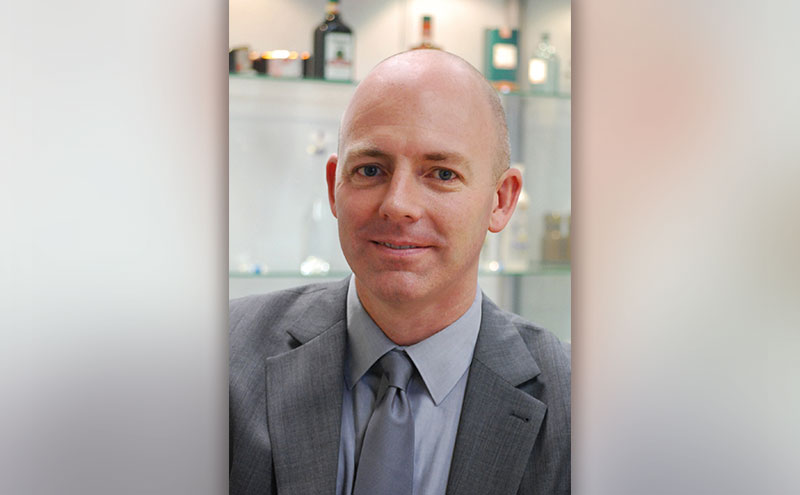Stölzle Glass Group has hailed the Scottish spirits sector as “the major driver” of its premium spirits brand.
The global manufacturer, which has over 200 years’ experience in the production of glass, has six production sites and three decoration sites across Europe, with Stölzle Flaconnage in Knottingley, West Yorkshire servicing the UK market. Stölzle’s premium spirits division operates out of that facility, providing bottles for some of the country’s leading drinks firms including Diageo and William Grant & Sons.
Gary Steen, sales director for premium spirits UK, told Packaging Scotland that Stölzle doesn’t carry out all work for one specific brand, but rather that brand’s premium element, highlighting Glenfiddich Scotch whisky, for which the manufacturer produces bottles for whiskies aged 18 years old and over. Younger whiskies are produced by other manufacturers using more commercial flint, Gary said.
He described Stölzle’s glass as cosmetic grade, calling it “super high premium quality”.
“We don’t use any external cullet. All our furnaces are predominantly 100% raw material and because there is no external recycled glass going into it gives it a very high quality in terms of brightness, shininess and also clarity. With that kind of glass it allows us to make really difficult shaped bottles and really heavy bottles as well.
“Quite a number of the bottles that we manufacture have got embossing and debossing and combinations. We’ve got a decoration facility here on site so we can provide a one-stop shop business.”

Stölzle won the Glass Pack of the Year prize at last year’s UK Packaging Awards with a product called Axberg Vodka. “The bottle was a feeder colour so it was actually coloured in a grey colour,” Gary said. “It was also decorated so it had a gold print on it as well as other colours of ceramic prints. It’s octagonal in shape and from a design perspective it’s really interesting.”
Stölzle also produced the striking bottle for Isle of Harris Distillers’ sugar-kelp infused gin brand, for which the manufacturer received a World Packaging Organisation WorldStar Award in 2016.
“Isle of Harris is a good example of really good bottle design; a lot of texture, a lot of feel,” said Gary.
“Quite a noticeable trend for a little while now is the tactility of the glass, so it has to feel and function in a more ergonomic way, it’s not just about looking at it.
“Typical embossing in the past has been lettering – the word ‘distillery’ on a bottle or something like that – where now it’s very much trying to get the design of the bottle to have some of these embellishments as well, actually in the glass.
“That’s a good example of where we’ve designed some features into it and it’s also a combination of decoration because we just put a small amount of spray on the base of the bottle and the ribbing effect on the bottle then helps transmit that colour from the base up into the bottle. It’s really quite subtle how we do that but it gives it a really nice effect.”
Gary commented that while spirits giant Diageo was “market leader” with regard to brand premiumisation, he had noticed that other companies were starting to look at premiumisation in a bigger way.
“They were looking at it before and they have got examples of premium products but it was almost like a brand extension whereas now there’s quite a lot of activity, really looking at people’s portfolios and how they can move it forward in a bigger way.”
An on-going project is with Trossachs Distillery and its McQueen Gin brand. Gary explained the distillery is currently producing its gin in a ceramic bottle but is now looking to complement that with a glass offering, while maintaining the ceramic bottle as a “super high end” product.
Gary described the market generally as “really buoyant” at the moment. An increasing number of firms are looking at premiumisation, while gin start-ups have also helped immensely.
“We were very active in the market last year trying to win new business and do product development in a big way and that’s starting to cascade through the business now as well, so we’re massively busy,” Gary explained.
Looking ahead, Gary said it was important for the firm to provide a “proactive approach to some of the brand building and brand extension”.
“I think we need to come along sometimes and energise customers with ideas and get them thinking about premiumisation when they’ve not thought about it before. We are generally led by customers; we’re very receptive to what comes through the door, so to speak, but I think we need to take a lead and the customers are demanding that we take a lead more and more these days so we’re expanding our design department.
“Quite clearly our USP is flexibility. We make a couple hundred bottles, right up to millions. When you’ve got a typical MOQ (minimum order quantity) being 30 to 40,000 bottles a day, businesses are not really set up to (make) a few hundred bottles – but we’ve found a way of helping people do that.
“Instead of running (a machine) for 24 hours we might run it on a product for ten, or we might make the product and design the product so it can run on the machine with other bottles.”
Gary added, “Because our glass is so pure looking – it’s so clear and it’s bright and it’s shiny – it enhances anything that is vodka or gin based, for example. The other thing we can do is give it differentiation on the shelf, so it’s about the decoration that we’ve got, the feeder colouration systems that we’ve got, so we can make the bottles in different colours which allows shelf stand-out as well. We can help with bottle design; the feeling of premiumisation is generally associated with weight and we make a lot of heavyweight bottles. Colour, decoration and all those things are more or less linked into premiumisation.”















